 |
 |
 |
| |
Predictive performance of cardiovascular disease risk equations in people living with HIV
|
| |
| |
Reported by Jules Levin
20th International Workshop on Comorbidities and Adverse Drug Reactions in HIV
Oct 13-14 2018 NYC
RosanA van Zoest, Matthew Law, Caroline A Sabin, IloncaVaartjes, Marc van der Valk, JoopE Arends, Peter Reiss, Ferdinand W Wit
On behalf of the Netherlands ATHENA observational HIV cohort
from Jules: This is an important study. my comment is that all the algorithms are off, none of them even for HIV-neg include many key factors like inflammation markers, diet, exercise, mental status & physical functioning, none of them evaluate on an individual basis. Unfortunately all too often HIV providers merely use an equation or evaluate risk in a very limited way, often not very well understanding the full spectrum of this person’s risk, behavior, lifestyle, and perhaps most important safety concerns. In the general population there have been published discussions and controversy about statin use in elderly. Published research has reported HIV+ have greater risk in older age for statin muscle toxicity and/or ALT elevations, these should NOT prevent due evaluation & consideration for statin use for anyone but ought to be considered which all too often it is not. the older aging HIV+ population is suffering multi-comorbidity often having 5-8 comorbidities depending on the individual with some worse than others, and also suffering with polypharmacy often taking 8-15 medications. All this ought to be considered in the decision making process for older aging HIV+, again not meaning to prevent any HIV+ from due consideration of taking a statin but just to take a broad look at all the factors. I know some researchers are worried these kinds of comments raising cautionary issues may prevent some HIV+ from taking a statin.
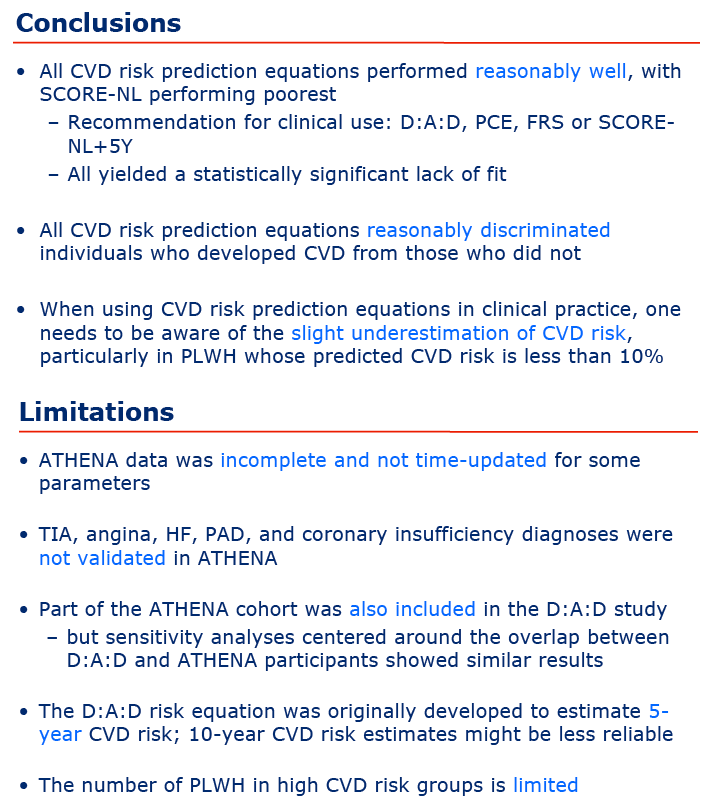
program book abstract
Aims: To evaluate the performance of four commonly used cardiovascular disease (CVD) risk prediction algorithms in people living with HIV (PLWH) in care in the Netherlands.
Methods: We included ATHENA (AIDS Therapy Evaluation in the Netherlands) cohort participants attending one of 26 HIV treatment centres with ≥2 outpatient clinic visits between 1/1/2000 and 31/12/2016 who met the inclusion criteria: HIV-1-positive, aged ≥18 years, without pre-existing CVD, initiated first combination antiretroviral therapy (cART) regimen >1 year previously, and with available data on smoking status, total/HDL cholesterol, blood pressure and CD4 count.
We estimated CVD risk using four risk equations: (1) Data Collection on Adverse Effects of Anti-HIV Drugs (D:A:D) equation; (2) Framingham Risk Score (FRS); (3) Pooled Cohort Equation (PCE); (4) Systematic COronary Risk Evaluation equation adjusted for national data (SCORE-NL). CVD was the primary outcome, defined as fatal/non-fatal myocardial infarction, fatal/non-fatal stroke, invasive coronary procedures, carotid endarterectomy or coronary heart disease related death. Follow-up was censored at the earliest of: 10 years after the baseline visit, 31/12/2016, death or loss-to-follow-up. Kaplan–Meier and Cumulative Incidence Function (CIF) approaches were used to account for variable follow-up time. Predictive performance was assessed using observed-versus-expected ratio, calibration plots and Harrell’s C-statistics. Sensitivity analyses were performed excluding (1) PLWH participating in D:A:D and (2) PLWH <40 or >70 years.
Results: 16,042 PLWH were included with a median age of 43 (IQR 36–50) years, 82% male, 95% used cART and 89% had HIV RNA <200 copies/ml. Depending on the algorithm used 2.5–12.1% of individuals were categorized as being at high CVD risk (Table 1). Median follow-up was 5.4 (2.5–9.0) years, during which CVD incidence was 6.5/1,000 person-years. FRS overestimated CVD risk over the entire range, whereas D:A:D, PCE and SCORE-NL slightly underestimated CVD risk (Table 2) in the highest, middle and lowest/middle deciles of predicted risk, respectively. All risk equations showed acceptable discrimination (Harrell’s C-statistics 0.76–0.79). Sensitivity analyses showed similar results.
Discussion: D:A:D, PCE and SCORE-NL are all valid options for use in clinical practice, with the caveat of slightly underestimating CVD risk. In this study, FRS overestimated CVD risk, which is at least partly due to not including some of FRS CVD end points (for example, angina, heart failure).
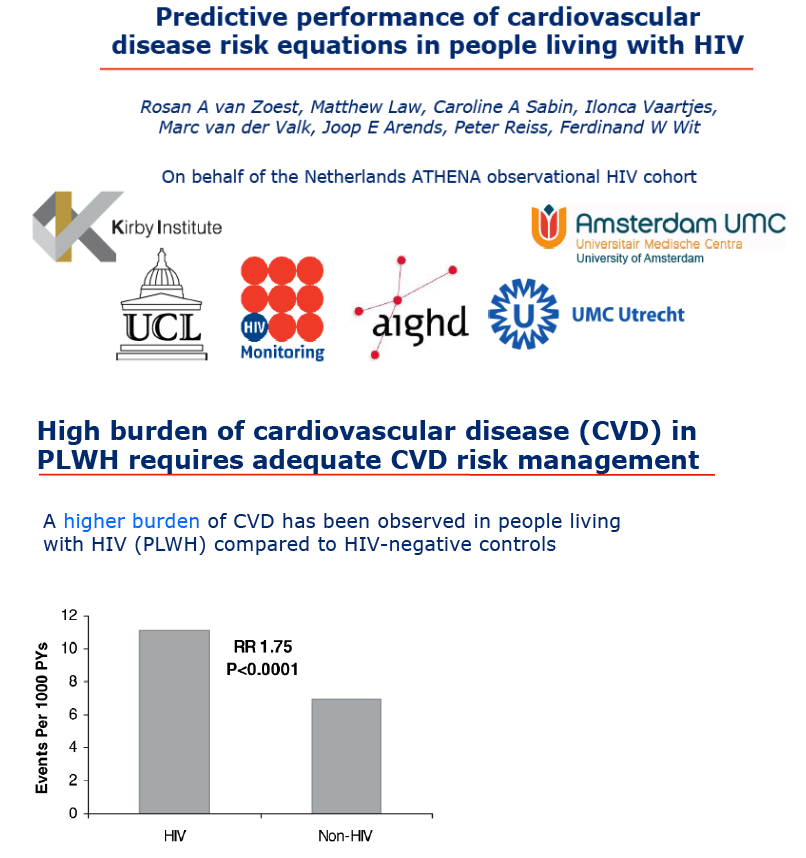
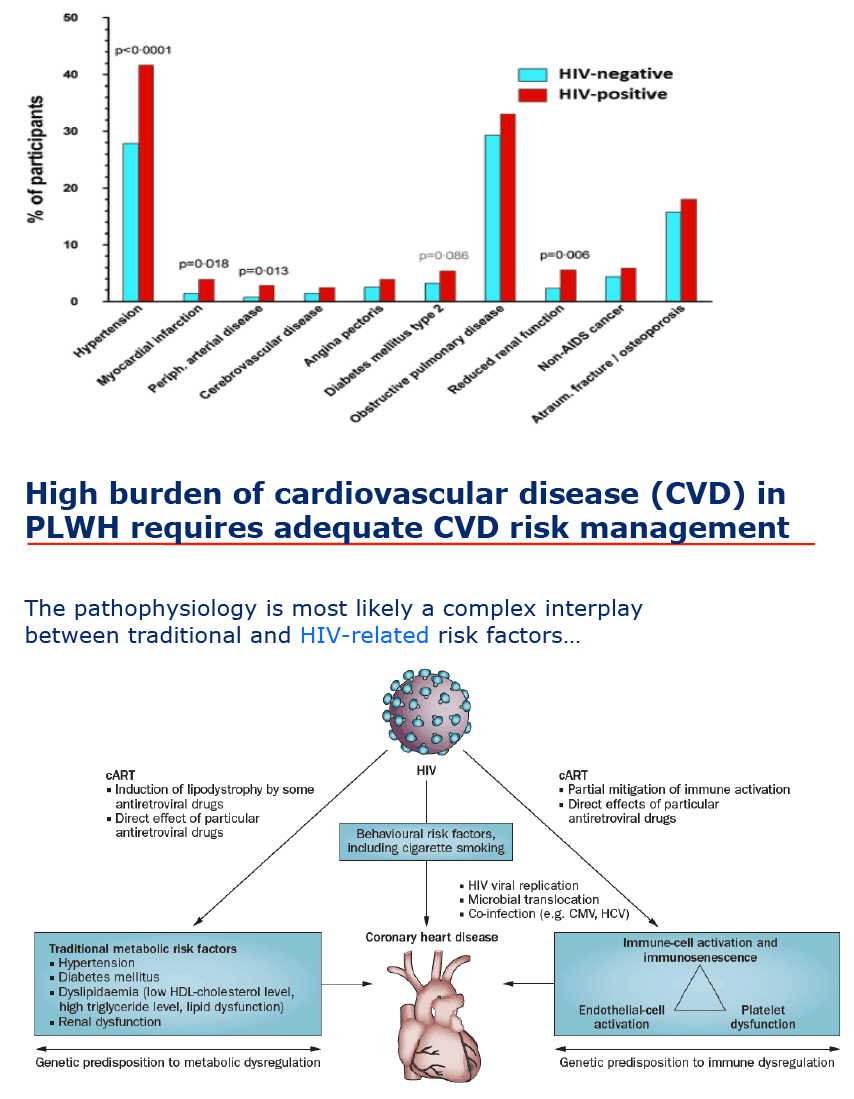
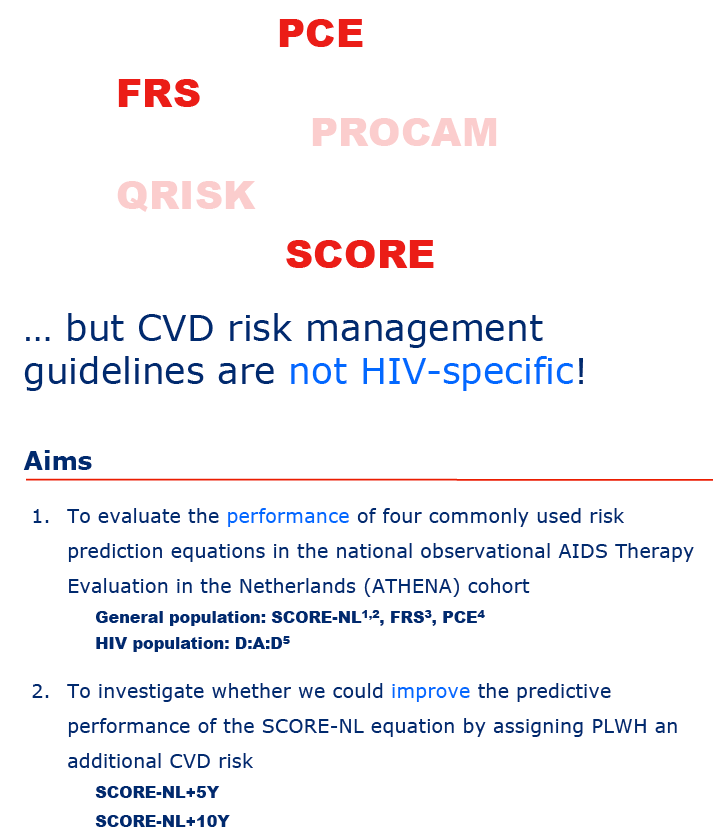
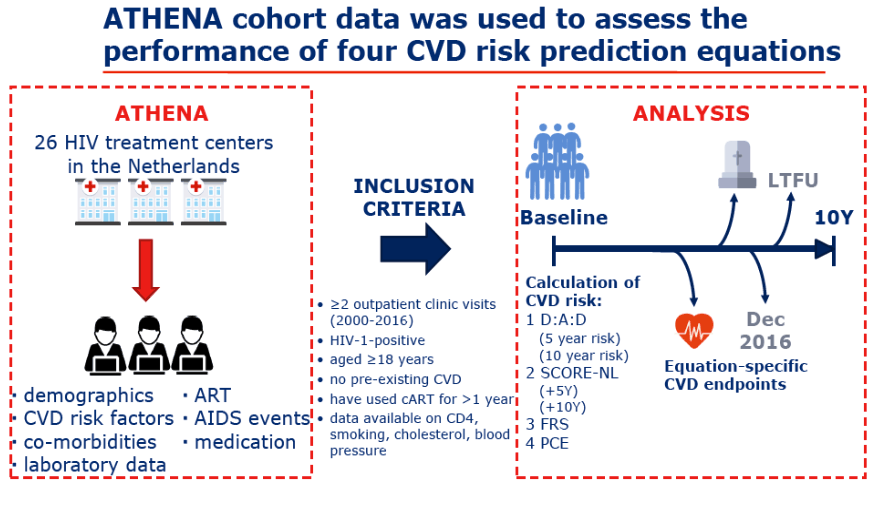
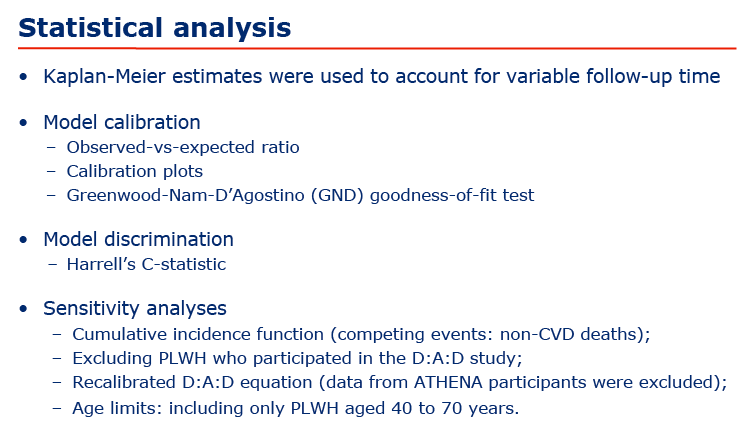
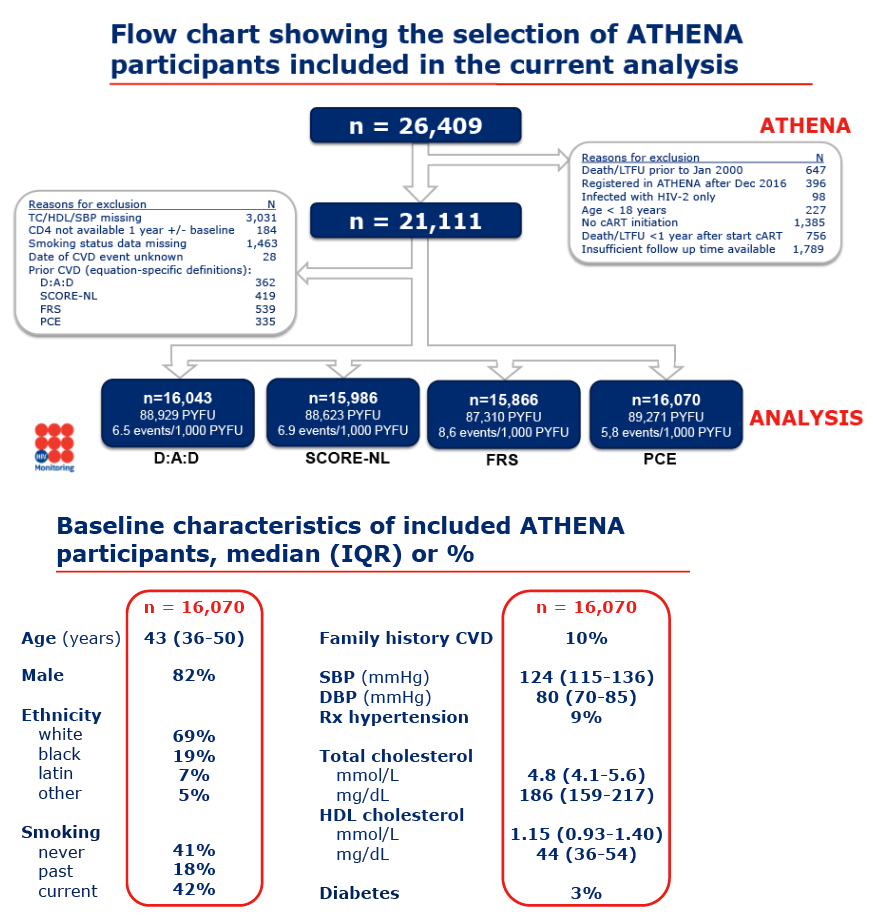
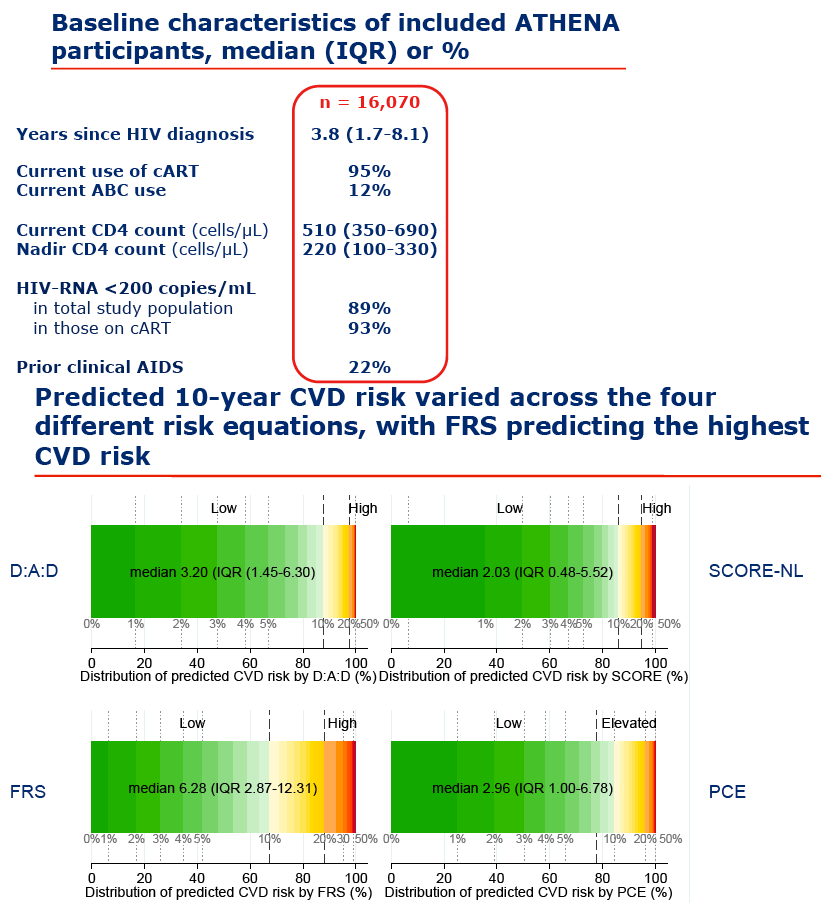
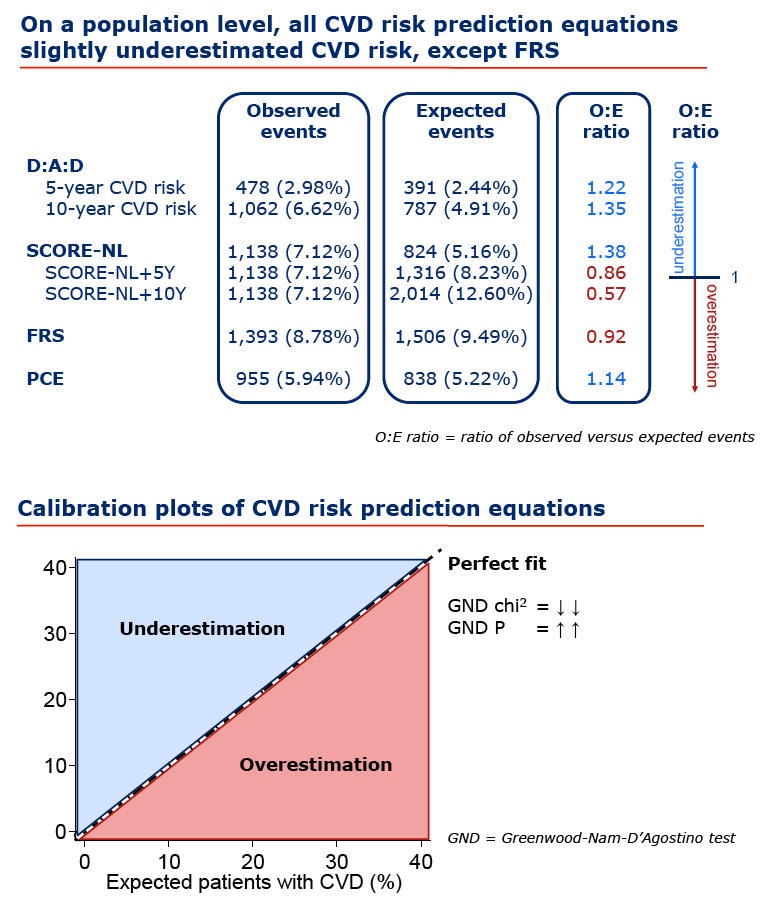
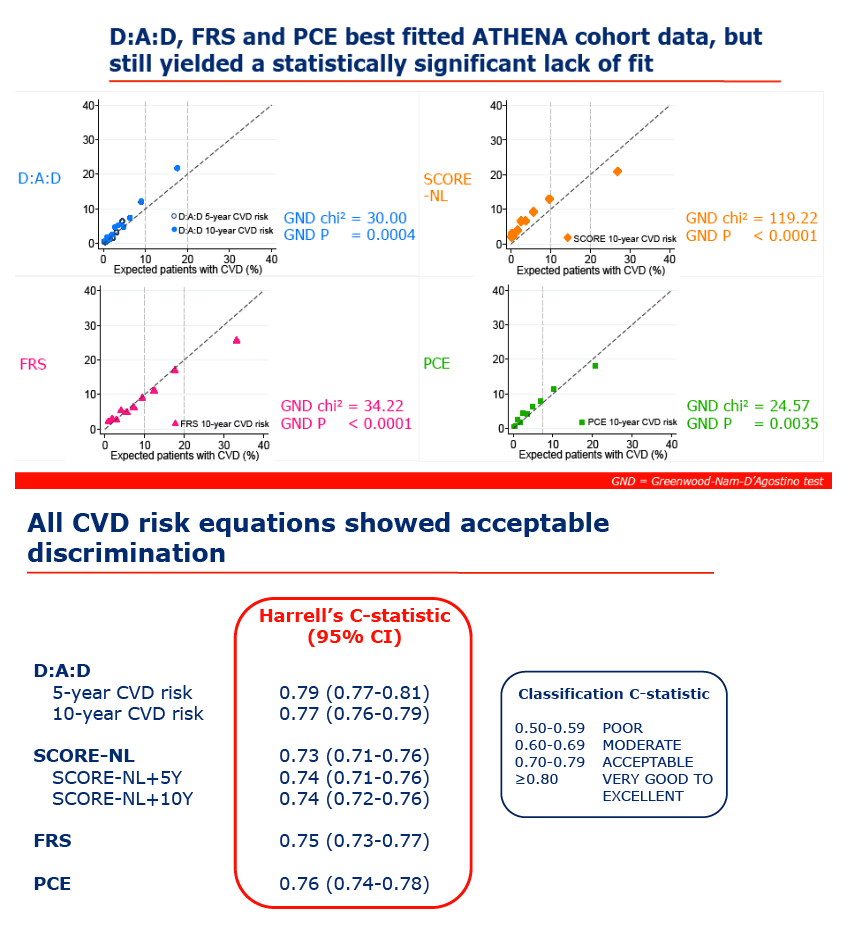
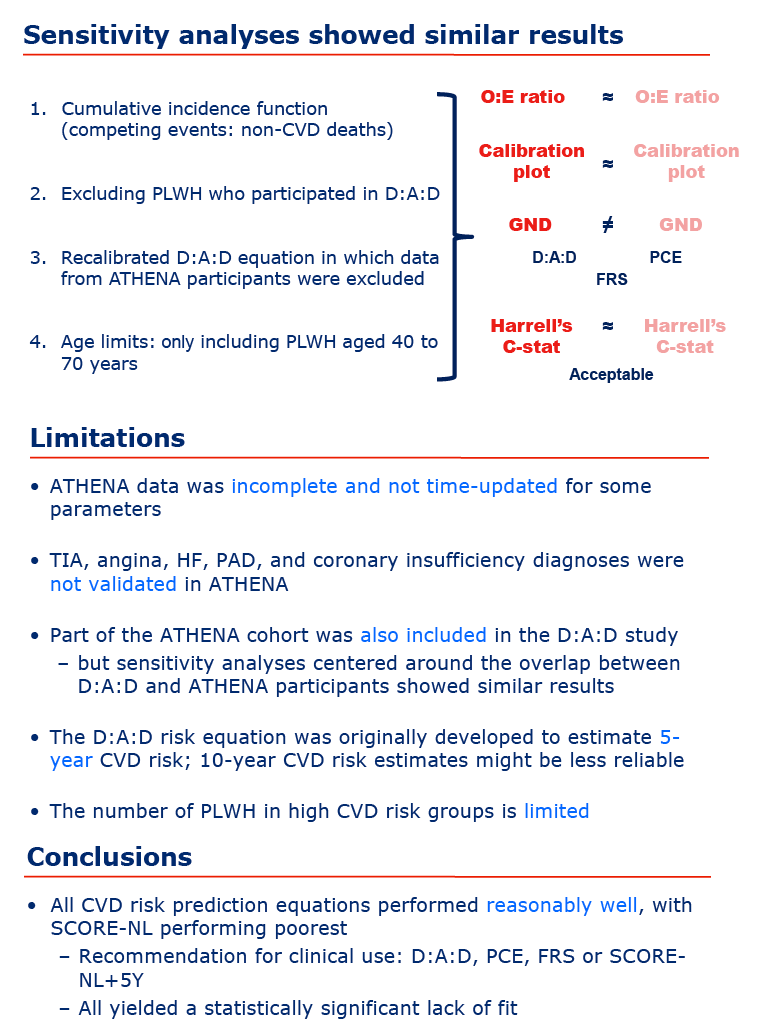
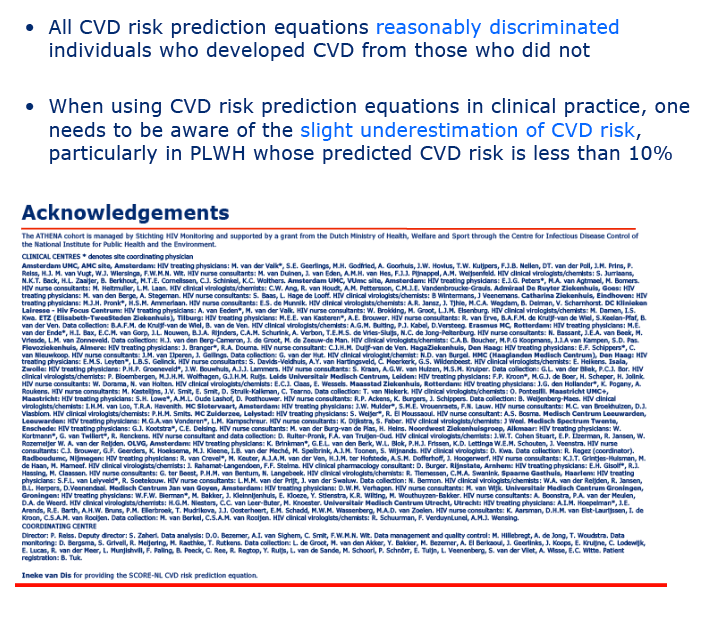
|
| |
|
 |
 |
|
|